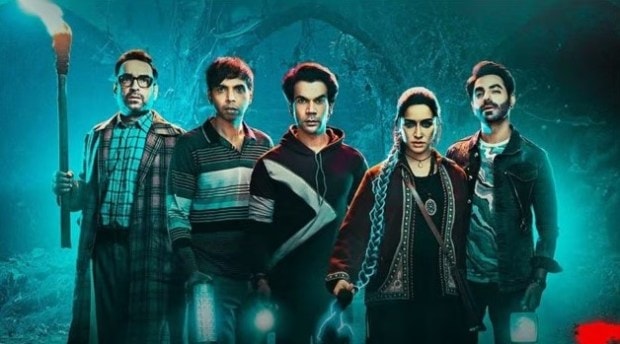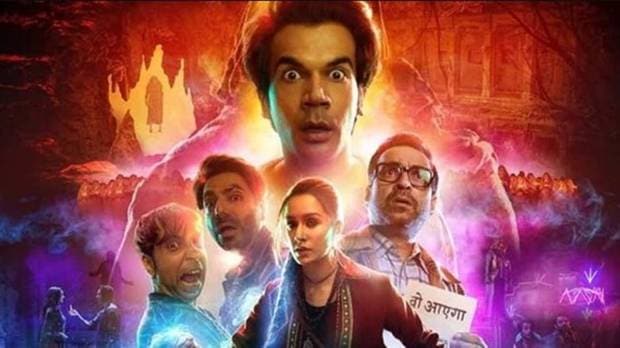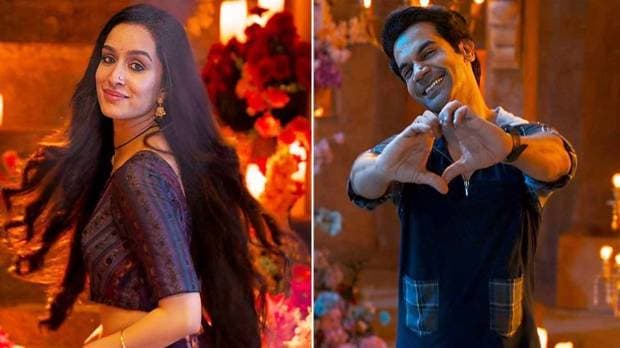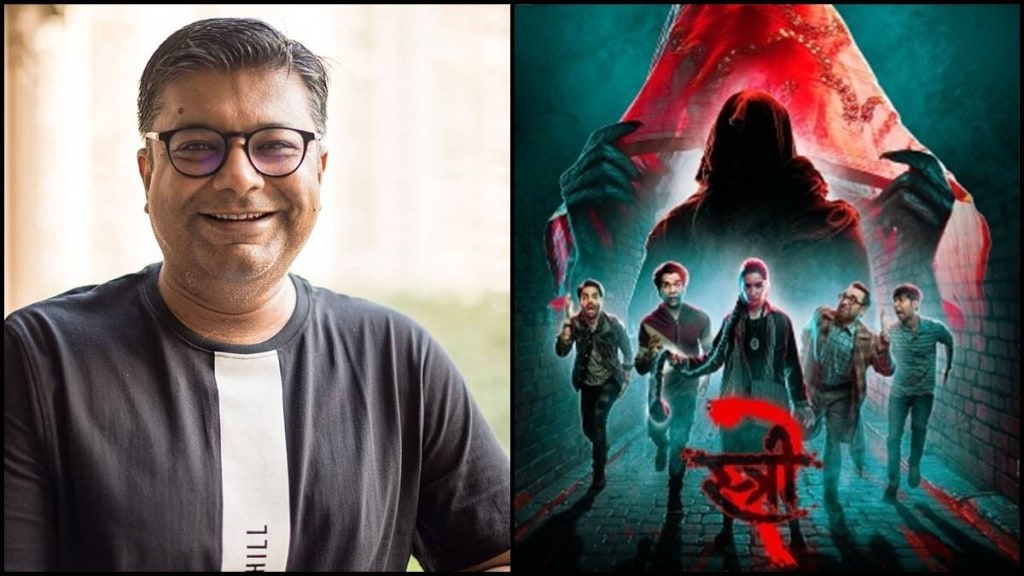In an exclusive interview with Niren Bhatt, the writer behind the blockbuster sequel Stree 2, we delve into the creative journey that led to the development of this next chapter. Bhatt, known for his impactful storytelling and intricate character development, shares insights into how he crafted the storyline and character arcs for this sequel. With a deep respect for the original film, Bhatt sought to extend its narrative rather than simply replicate it, ensuring that the new installment would resonate with both returning fans and newcomers. From the intriguing connections with the first film to the fresh challenges of advancing beloved characters’ arcs, Bhatt reveals the meticulous process behind bringing Stree 2 to life. Join us as we explore the inspirations, creative decisions, and collaborative efforts that shaped this much-anticipated follow-up. Edited excerpts from the interview:
What inspired you to craft the storyline and character arcs for this sequel? How did you approach the continuation of the story from the first film?
When we decided to create the sequel and I was tasked with writing it, my first step was to find a thread from the original film that I could continue. I didn’t want to create an entirely different film and simply label it Stree 2. My goal was to extend the existing story and develop the wonderful characters further. I began by examining the murals in the cave from the first film, where Stree’s choti was cut, and noticed a mural depicting Stree’s lover with his head missing. This sparked the idea: if Stree’s lover was decapitated and both he and Stree were burned by powerful men, what would happen if Stree, now a powerful spirit, returned seeking vengeance? Her first act would be to decapitate those responsible, potentially including the most powerful man in town, Sarkata, who is also the namesake of Chanderi. As Stree seeks love and respect, Sarkata returns to reclaim his authority.
In developing the character arcs, I aimed to do justice to each one. Rudra Bhaiya’s character (Played by Pankaj Tripathi) now has a love story with heightened stakes, as his girlfriend is kidnapped. Bittu’s character (Played by Aparshakti Khurrana) meets a new individual, while Vicky’s character (Played by Rajkummar Rao) continues his search for a significant person and ultimately uncovers her true nature and purpose. Jana’s character (Played by Abhishek Banerjee) serves as the connecting link throughout the universe. Initially seen as JD in Bhediya, it is revealed at the end of the film that JD is actually Jana from Stree, thereby linking the two films. Jana also appears in the post-credits scene of Munja. I focused on completing each character’s arc and ensuring their stories were fully resolved.

Rajkummar Rao has brought a lot of depth to his character. What was it like working with him on this project? How did his portrayal influence the writing of his role?
Rajkummar Rao is an exceptional actor. My collaboration with him dates back a long time; we worked together on the film Made in China, as well. I was already aware of his potential and what he brought to his character in part 1, so it was easier for me to write. However, every time he performs what I’ve written, he elevates it to a higher level. He is simply a brilliant performer, and his portrayal significantly influenced the writing because of his immense potential. As a writer, you naturally want to explore that potential to the fullest, which is exactly what I aimed to do.
Pankaj Tripathi, Abhishek Banerjee, and Aparshakti Khurana all play pivotal roles in Stree 2. How did you collaborate with these actors to ensure their performances aligned with your vision for the film?
Abhishek Banerjee and I work very closely together. He has appeared in most of my films, including Made in China, Bala, Bhediya, Munjya, and now Stree 2. I am well aware of what Abhishek can do, his potential, and how he plays Jana, which is why it was a dream for me to write this character for him. Pankaj, of course, is widely recognized for his brilliant acting. Additionally, Apar’s comic timing and singing abilities, as showcased in the lorry scene where he sings “soft kitti, warm kitti,” are well-known. I made sure that their performances were aligned with the vision of the film.
Can you share the journey that led you to become a screenwriter? What were some pivotal moments or experiences that shaped your career?
My journey began with theatre. I was involved in theatre while I was in school, during college, and even while working a corporate job. Despite my extensive education—holding Masters in Engineering, Management, and an MBA—I found myself in a comfortable corporate position as a business consultant. However, I realized that my true passion was in creativity. I had been writing and was a playwright, and I knew I wouldn’t thrive in the corporate world. So, in 2011, I made the difficult decision to leave a well-paying corporate job and transition into a completely new career.
Initially, I started writing plays, commercials, and Gujarati plays. Gradually, I moved into writing TV serials and Gujarati films. Some of my early work succeeded, while others didn’t, but I eventually found my footing with Tarak Mehta Ka Ooltah Chashma, which solidified my role as a professional writer. My first major success in Gujarati cinema came with Bayar, where I was both a screenwriter and lyricist. This film, featuring Pratik Gandhi and Divyank Thakkar—who later directed Jayesh Bhai Jordar—became a huge hit and developed a cult following. We recently celebrated its 10th anniversary, marking it as a milestone Gujarati film.
Since then, my career took off. I wrote numerous Gujarati films and lyrics for a variety of projects, including around 35 to 36 music albums in both Gujarati and Hindi. My big breakthrough came with Bala, which was a major success and marked the beginning of my collaboration with Amar Kaushik. We worked together on several projects, including Bhediya and Munjya, where he was the producer and Aditya Sarpoddar was the director. We also worked on Stree 2 and other films like Pooja Meri Jaan and Sky Force, which will be released in the future. This has been the essence of my journey so far.
Your filmography boasts an impressive array of notable works, including Taarak Mehta Ka Ulta Chashma, Bala, Serious Men, Ray, Asur, Inside Edge, Bhediya, Stree, Munja, and several other major hits. Many of these projects have achieved either blockbuster success or cult status. What can you share about your experience with these standout productions?
Each project I’ve worked on has brought its own unique experiences. Tarak Mehta Ka Ooltah Chashma provided me with stability in my career, financial freedom, and the discipline needed for television writing, which is essential due to its daily nature. Bala was significant because it was my first major blockbuster in Hindi cinema, earning me numerous awards and recognition, and marking the start of my collaboration with Amar Kaushik.

Serious Men was another special project where I did additional screenplay and dialogues. Collaborating with the veteran Sudhir Mishra and adapting Manu Joseph’s novel was a unique experience. Manu is a talented writer, and working on Serious Men was particularly memorable.
Ray came right after Bala, and was developed during the pandemic. My primary interest in Ray was working with creators like Abhishek Chaubey and Vasan Bala. I worked on two films with them, Spotlight and Hanga Mahe Kyu Barpa. For Hanga Mahe Kyu Barpa, I wrote the entire film in Urdu, which was a rare and rewarding experience.
Asur was an early venture into OTT, developed for the platform Voot. It began as a forensic thriller but evolved into a mythological thriller involving serial killers motivated by mythology. This project involved extensive study of mythology, including texts like the Kalki Puran and Bhagwat, which made it an enriching experience. Asur was released at the onset of the pandemic, and despite initial uncertainties, it eventually became a cult show.
Inside Edge was another highlight, particularly because it revolved around cricket, a lifelong passion of mine. Writing for season 2 was a joy, fulfilling my childhood dream of being involved in cricket-related content.
Bhediya was special for its exploration of Arunachal Pradesh during the pandemic. We delved into the state’s food, culture, and folk tales, and filmed extensively in the region.
Munjya, directed by Aditya Sarpodkar, took me to Konkan, where we experienced the region’s beautiful beaches, food, and folk dances. Interacting with local folk artists and exploring the Konkan culture was a wonderful experience. The film’s success, crossing 100 crores, was a significant achievement for us.
Finally, Stree 2 has been a tremendous success, and it still feels surreal. I’m still searching for words to express how I feel about this accomplishment. All I can say is it’s a truly wonderful experience.

How have your writing styles and approaches evolved over time?
I mean, it has evolved significantly because I come from a theatre background, where dialogue is the predominant medium. My earlier scripts were quite dialogue-heavy, but as I began writing films like Munja, Bediya, and Stree, I started learning the true craft of screenwriting, which involves telling the story through visuals. I began thinking in visual terms and creating visuals accordingly. This is how my approach is evolving, and it continues to evolve. I wouldn’t claim to have mastered the craft yet, but I am still learning.
There’s a growing emphasis on OTT platforms. How do you adapt your writing style for big-screen films compared to OTT content? Are there specific challenges or opportunities unique to each format?
Of course, I have written across various formats. I’ve written for television, theatre, Gujarati films, Hindi films, and OTT shows. Each medium is unique and presents its own challenges. OTT is a dream for a writer because it provides ample time to explore all characters, their backstories, motivations, desires, and needs. In a film, you can’t delve into every character; you have to focus on the protagonist, the hero’s journey. However, with OTT shows, you can explore all characters, which makes writing them a joy. Films, on the other hand, hold a special place for us because we grew up watching them. Writing a successful film is always more challenging, as you can never predict how audiences will react in a cinema hall. Every element of the film—where to place the interval, and how to design the climax—requires meticulous attention and repeated refinement to make it a perfect entertainer. Both mediums have their distinct challenges and characteristics.
Films like Brahmastra and Kalki 2898 AD have faced criticism for their writing. In your opinion, what are the key elements that can lead to poor writing in films, and how can filmmakers address these issues?
Regarding Brahmastra, Kalki, and other films, I prefer not to comment on their specific aspects. However, I’d like to make a general observation about the poor writing in films. Many of our films fail due to inadequate writing. In both North and South Indian cinema, I believe this issue stems from poor writing. To address this, filmmakers need to empower writers by valuing their contributions, offering fair compensation, and showing them respect. Unfortunately, writers, especially newcomers, often do not receive the recognition or pay they deserve, which I think is a significant issue.

As for the challenges in writing Bhedia and Stree 2, I can’t comment on Stree 2 as it wasn’t written by me. However, with Bhedia, we initially had the idea of Stree in mind. When writing Bhedia, we incorporated that concept, which is why Abhishek Banerjee’s character is named JD throughout the film. At the end, it is revealed that JD is actually Janardhan, with the nickname Jana, linking him to Stree. This connection was also extended by including Jana and Bhaskar, Varun Dhawan’s character in Bhedia, in Munja. This interconnection helped set the stage for Stree and integrated the Bhedia and Stree worlds. The presence of Jana and Bhaskar in Munja and the appearance of Bhedia in Stree 2 further linked these stories together.
Looking back at Bhediya and Stree 1, what were the biggest challenges and highlights in writing those films? How did they set the stage for Stree 2?
While writing Stree 2, given that it was a sequel, I approached it with great care. The first thing I did was release any expectations and baggage from the first part, allowing myself the freedom to create something new and bold. I focused on connecting every thread left open in Stree 1. For instance, Shraddha Kapoor’s character leaves behind a choti in the first film, which I used creatively in Stree 2, similar to a rope dart in ninja films. There are many connections to the first part; for example, in Stree 1, Rudrabhaiya receives calls from someone named Shama, whose identity is unclear. In Stree 2, we finally see Shama, played by Tamanna Bhatia. Even small details, like not properly filling up the petrol tank, were carried over from the first film. I wove these threads into the narrative of the second part and worked to provide a satisfying conclusion. I aimed to do justice to Shraddha Kapoor’s character by revealing her identity and purpose by the end of the film. Continuing the story also meant maintaining the goodwill and camaraderie established in the first film. People were already familiar with the characters, which helped them engage with the sequel right away. Overall, it was very rewarding in that sense.
How has technology, including digital tools and platforms, impacted your screenwriting process? Are there specific technologies you find particularly useful?
There are many technologies and tools that are particularly useful for screenwriting. For instance, I use AI extensively for research. Various platforms provide valuable data for whatever you’re researching, whether it’s ghost stories or specific subjects. For screenwriting itself, there are numerous software options like Final Draft, Celtx, and Writers Duet, which facilitate real-time collaboration online with your co-writers. I rely on these tools a lot.
Additionally, note-taking apps are incredibly helpful. You can record ideas, save pictures, websites, and references that you come across. There are also software options for creating flowcharts and index cards for your narratives, which I use as well. AI tools are beneficial for generating visual references; by providing specific commands, you can get AI-generated visuals that match your creative vision.
Can you share any insights into your upcoming projects? Are there particular genres or themes you are excited to explore next?
Regarding upcoming projects, I continue to innovate and explore different genres. I’ve written a politically-themed film that is currently under review with the censors, and I’m excited to explore genres like sci-fi, sci-fi horror, and mythology in the future.
What advice would you give to aspiring screenwriters who are looking to make their mark in the industry? What skills or experiences do you believe are essential for success?
For aspiring screenwriters, my advice is simple: read a lot and write a lot. Breaking into the industry can be challenging, as filmmaking is costly. Don’t expect to immediately pitch a story that results in a high-budget film. Start by learning the craft and exploring other mediums like television, OTT, or even creating a zero-budget short film on your phone and sharing it on YouTube. Writing novels, short stories, or plays can also be valuable. Demonstrating your talent in these areas can help you make a mark in the industry. Skills in writing develop through practice, so write and read extensively. I wish all aspiring screenwriters the best and hope for success in their careers.

